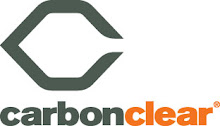Talk about your unintended consequences. Remember the ozone layer? The good news is that the man-made ozone hole over Antartica is shrinking - it should be fully healed in another 60 years. The signers of the Montreal Protocol, which led to the phase out of ozone-depleting chlorofluorocarbons (CFCs) in spray cans, air conditioners, and fire extinguishers, deserves a ton of credit for this.
The bad news is that most manufacturers switched to ozone-friendly hydrochlorofluorocarbons (HCFCs) to replace CFCs as a refrigerant. Our friends at Wikipedia tell us that in terms of global warming, HCFCs are 1,700 times as potent as good old carbon dioxide. Even methane pales in comparison. The Kyoto Protocol calls for a drastic reduction in HCFC emissions. Refrigirator and air conditioner manufacturers in countries bound by the Montreal Protocol say they don't have a good alternative.
This is a battle that bears watching. The silver lining for Kyoto is that a polluting refrigerant manufacturer can balance out those emissions by investing in pollution reducing projects elsewhere.

